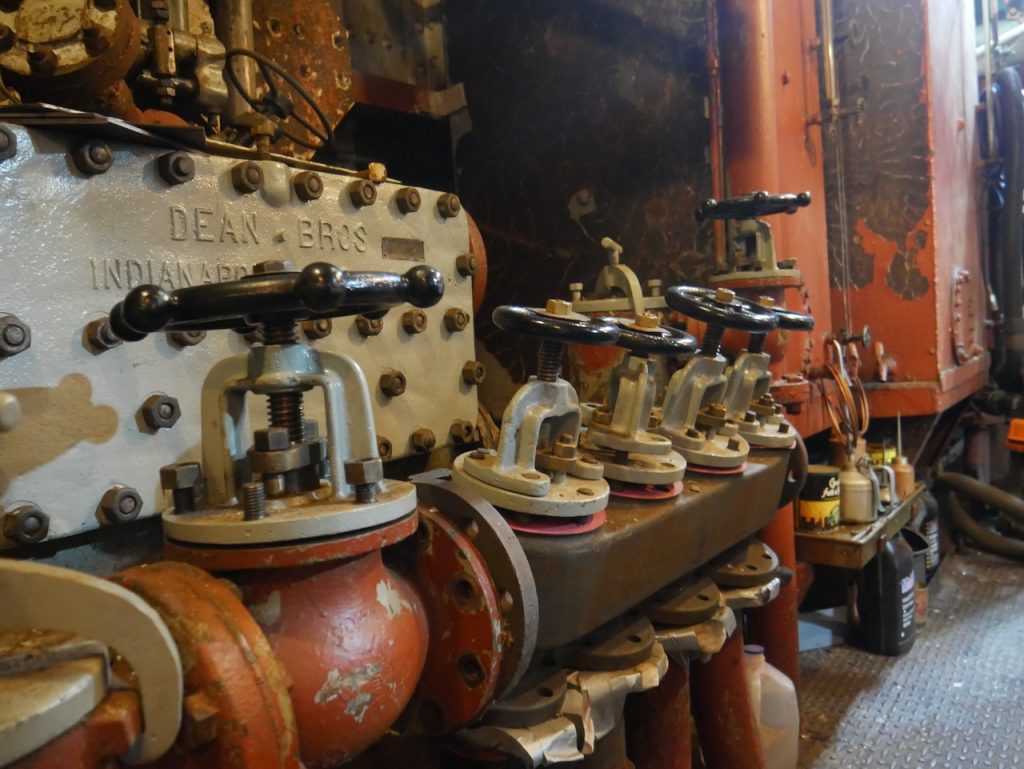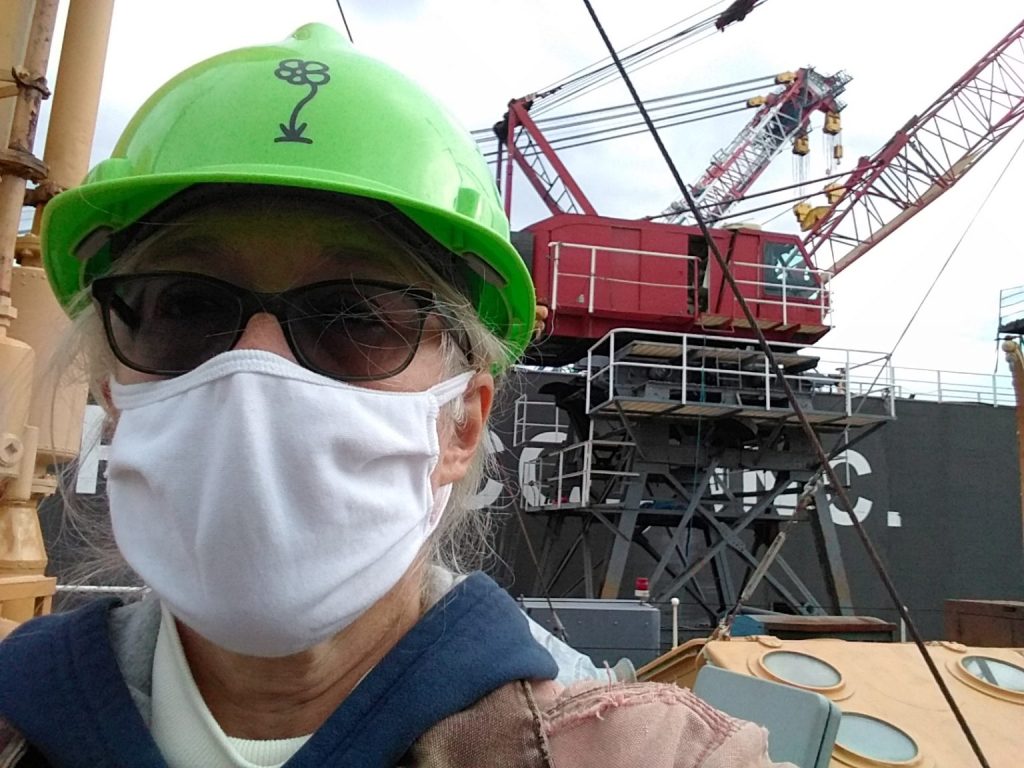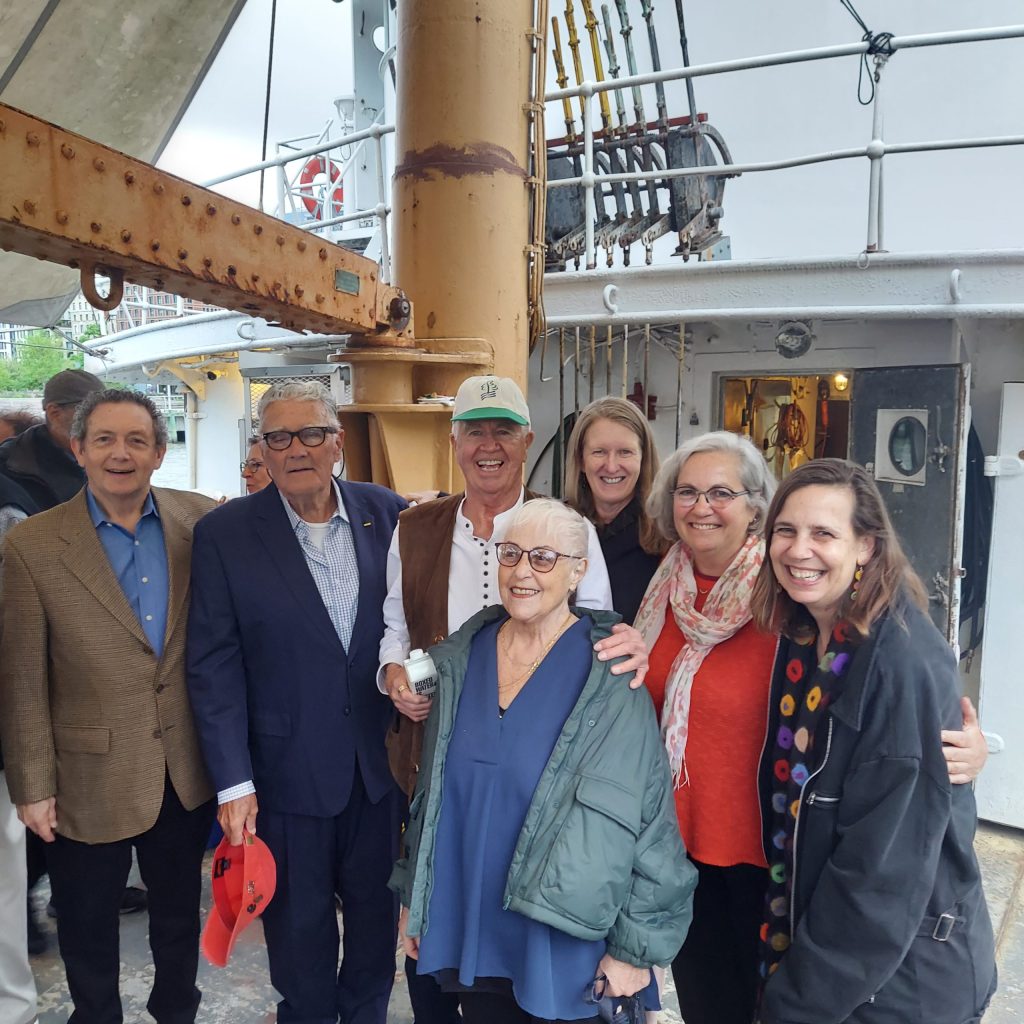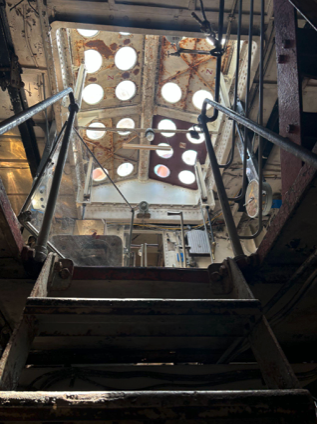BY OTTO FRITTON | Sitting 174.5-feet long and nestled into its berth at Pier 25, the Lilac has become an iconic mainstay on the Lower West Side waterfront. Lilac is America’s only surviving steam-powered lighthouse tender. A retired Coast Guard cutter, it carried supplies to lighthouses and maintained buoys between 1933 and 1972.
Following its decommission, Lilac traveled widely, moving from Maryland to Virginia, as well as serving as a dormitory for the Seafarers International Union’s Harry Lundeberg School of Seamanship and, subsequently, a real estate office.

More recently, since moving to Tribeca’s Pier 25 in the Hudson River Park in 2011, Lilac has become a museum ship that is owned and operated by the nonprofit Lilac Preservation Project. Headed by Museum Director Mary Habstritt and an entire volunteer community, the project is devoted to educating others about the tender’s rich history.
According to Habstritt, while Lilac currently offers educational spaces, the initial objective was to return the vessel to working conditions.
“The nonprofit was created specifically to take on restoration of the ship and put it back into operation,” she said. “It’s still not running, but closer than it was, certainly.”

Though the Lilac is not yet in sailing operation, the fact that it is still afloat is reassuring in itself. As Habstritt explained it, preservation is often an uphill battle, with many of the sites and entities trying to be saved ending up demolished.
However, largely owing to a lack of development pressure — Lilac is a boat on water versus a historic building on a coveted plot of land — plus a passionate ownership, the Lilac has survived into the present day, becoming one of only three surviving lighthouse tenders from the U.S. Lighthouse Service.
The ship had a tuneup at a Staten Island dry dock a few years ago.
During an age of increased automation, lighthouses and lighthouse tenders have suffered an unfortunate yet inevitable fate of inutility. As Habstritt explained, it simply isn’t practical — either for financial or safety reasons — to have individuals operating lighthouses in this age.

“Once technology made it possible to eliminate those people, they did,” she said. “And I think it made sense. Even though it’s kind of romantic to think about those people living in that isolated place and being self-sufficient, it’s better both for them and the organization behind them to make it automatic.”
Lilac has been devoted to education during the last decade, with its decks opened to the public to promote maritime education, plus provide a venue for history and art, as well as offer a community space for meetings and events.
Tours, in particular, have become an integral part of Lilac culture. There are semi-self-guided tours, where participants can explore the inside of the ship themselves while also learning about its history and important features from volunteer crew members.
“We dedicate most of our resources to the tours,” Habstritt said. “Our docents will talk about the key systems of the ship. We have someone up on the bridge and they’ll talk about how the ship was navigated and how they steered the ship from the bridge.”
For Habstritt, these tours are not only an excellent way to educate the public about the tender and its history, but also for participants to learn about the ship’s navigational systems. Instruments such as compass, radar, sonar and more are often new to most people and provide great learning experiences.

While Lilac is a well-established presence in Tribeca, as Habstritt tells it, the ship may not remain there forever. Although Lilac has thrived with an all-volunteer crew, it’s clear that a larger, more robust organization, as well as more funding, are needed to fulfill the initial mission of returning the ship to operating on its original steam engines.
Asked what the future might hold for Lilac, Habstritt believes a larger team is essential should the Lilac be converted into a full-time dockside museum or become able to motor under its own power once again. Currently, the ship is only open to the public on select weekend hours.
“I think the mechanical stuff needed to be done to get her running,” Habstritt noted. “We need a bigger organization and more staff who are dedicated to that.”
So, there seems a chance that the historic ship could move away from Pier 25 and Manhattan altogether. Though Habstritt is saddened at this possibility, she feels this might be what the ship needs. Specifically, after the project’s completion, she thinks Lilac might be an excellent addition to the National Coast Guard Museum Association in New London, Connecticut.
“I actually sort of hope they might decide to adopt Lilac someday,” she said. “They certainly know about us… . I talked about the ship needing a bigger organization — and that might be it.”


Yes but increased frequency of incorrect usage does not make it correct. I don’t understand your point. I love Jim Power’s mosaics but they are most certainly not iconic.
Don’t try telling HIM that!
What are you referring to? Who is Jim Power? What mosaics? What’s the incorrect usage?
A fine boat with a fine crew and a dedicated staff to preserve this legacy — Iconic or not. Lighthouses are like pigeons, a visible sign of the advancement of the technology, but an important feature not to be forgotten. We would not be able to enjoy the commerce from the shipping that was enabled through the service of these Coast Guard vessels and their crews. Thank you, Captain Mary and Otto!
It’s not really “iconic.” I’m not sure why this word has been so misused recently. The Statue of Liberty is iconic. The Yankees logo is iconic. I think you would be hard pressed to find anyone who could tell you anything about this thing other than it’s a boat.
But Jim Powers’ East Village mosaic light poles can be called iconic. Australian newspapers overused the word “iconic,” it may have started there. A photo of a 14-year-old kid on a surfboard in an Aussie paper would be captioned “iconic.” WINS news radio was calling itself iconic for a while there.